- Elementos esenciales para llevar cuando viaje a una carrera GFNY.
- Algunos videos del día de GFNY
MEDIDAS PARA CONTENER LA PROPAGACIÓN DE COVID-19
Written by GFNY on August 20, 2020.
GFNY Florida Sebring está CONFIRMADO. La Ciudad de Sebring aprobó que GFNY Florida Sebring se lleve a cabo el 25 de octubre de 2020 y GFNY Kids Florida Sebring el 24 de octubre de 2020.
GFNY Florida Sebring está tomando una serie de precauciones para mantener seguros a los corredores, el personal y los voluntarios de GFNY. Las medidas incluyen el distanciamiento social, modificar aspectos de la carrera para evitar congregaciones de personas y evitar la contaminación de las superficies.
REGISTRO / RECOGIDA DE PAQUETES
El registro y la recogida de paquetes se realizarán mediante un método de flujo unidireccional.
Los corredores que se unen a la línea para acceder a la recolección de paquetes deben mantener una distancia de al menos 3 pies con la siguiente persona.
GFNY está eliminando varios pasos del registro y haciendo un puesto de inscripción para el proceso de inscripción completa para cada corredor, que incluye para el corredor: proporcionar un documento de exención firmada, recoger el paquete de la carrera, la camiseta y la bolsa de regalos. Todos los pasos de registro se realizarán consecutivamente en un puesto de registro para evitar la congestión y la movilidad, para garantizar una distancia adecuada entre los corredores.
GFNY contará con un stand con mercadería, que también operará en el mismo método de flujo unidireccional que la recolección de paquetes. Recomendamos a los corredores que hagan pedidos en línea en shop.gfny.com, que se pueden recoger mostrando una identificación con foto y un recibo de compra.
Varios proveedores de la industria de bicicletas mostrarán sus productos y servicios en la exposición. Para evitar congregaciones de personas, la exposición se llevará a cabo con un método de flujo unidireccional similar, inmediatamente después del paso de registro.
El desinfectante de manos estará disponible antes y después de la recolección del paquete. El personal requiere mascarillas.

AREA DE INICIO
Los corrales de salida se extienden para el distanciamiento social y cada corral tiene un número menor de corredores asignados.
Carrera de adultos 25/10 (los corrales de salida están marcados con doble línea verde):
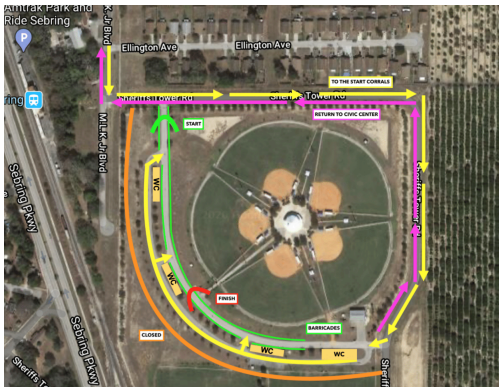
Carrera de niños 24/10 (área de preparación marcada en amarillo):
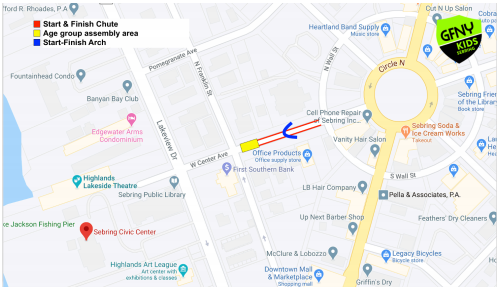
ESTACIONES DE AYUDA
Los avituallamientos están diseñados para garantizar la distancia entre los corredores y un método de flujo unidireccional.
Cada puesto de ayuda tendrá una línea de espera donde los corredores deben mantener una distancia de al menos 1 metro hasta el siguiente corredor. Habrá puntos de servicio designados. El miembro del equipo de la estación de ayuda llamará al siguiente corredor de la fila al punto de servicio abierto.
Cada punto de servicio contendrá todas las opciones de alimentos e hidratación disponibles para reducir la necesidad de mudarse de lugar o acercarse a otro corredor.
Todos los alimentos se envasarán de forma individual por motivos de higiene. Las tazas estarán precargadas. El rellenar de las botellas lo realizará el equipo de la estación de ayuda vertiendo en la botella del ciclista para evitar la contaminación de la superficie.
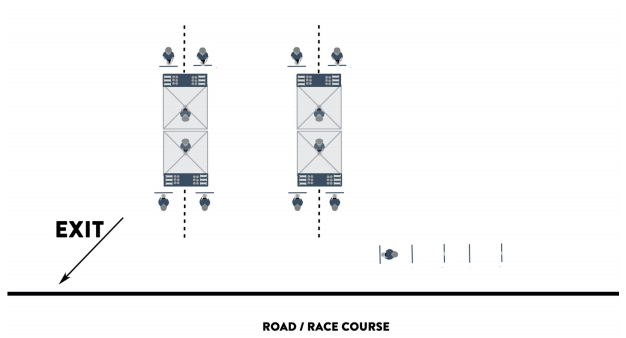
SIN ASISTENCIA
Si bien es una regla general que los corredores de GFNY no pueden aceptar asistencia externa, en este momento los corredores de GFNY Florida tampoco pueden intercambiar materiales entre los participantes.
INODOROS PORTÁTILES
Los baños portátiles se instalarán en un flujo unidireccional con un camino de entrada y salida. Habrá desinfectante de manos disponible.
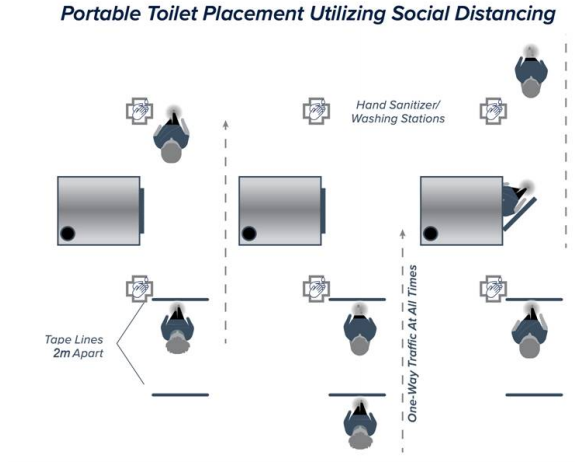
DESPUÉS DE LA LLEGADA
La llegada se configura en un método de flujo unidireccional. Después de que un corredor cruce la línea de meta, el corredor caminará con su bicicleta y respetará una distancia mínima de 3 pies con la siguiente persona. Esto se hace para evitar congregaciones de personas.
Lamentablemente, las medallas no se colgarán del cuello, se repartirán.
Los corredores que se unen a la línea de agua y las fotos del finalist deben mantener una distancia de al menos 3 pies con el siguiente corredor.
En el área de comida posterior a la carrera, no habrá estacionamiento para bicicletas disponible para evitar la contaminación de la superficie y las congregaciones de personas. Habrá estacionamiento para bicicletas disponibles para el aparcamiento. No está permitido dejar las bicicletas desatendidas o dejarlas en el suelo, lo que supone un peligro para la seguridad.
MEASURES TO CONTAIN SPREAD OF COVID-19
Written by GFNY on .
GFNY Florida Sebring is CONFIRMED. The City of Sebring approved GFNY Florida Sebring to take place on October 25, 2020 and GFNY Kids Florida Sebring to take place on October 24, 2020.
GFNY Florida Sebring is taking a number of precautions to keep GFNY riders, staff and volunteers safe. Measures include social distancing, modifying aspects of the race to prevent congregations of people and avoiding contamination from surfaces.
REGISTRATION / PACKET PICKUP
Registration and Packet pickup will be conducted in a one-way flow method.
Riders joining the line to access packet pickup are required to uphold at least 3ft distance to the next person.
GFNY is eliminating multiple steps from registration and making one check-in stand for the complete check-in process for each rider, which includes for the rider: providing a signed waiver, picking up the race packet, jersey and goodie bag. All the registration steps will be done consecutively at one registration stand to avoid congestion and mobility, to ensure adequate distance between riders.
GFNY will have a stand with merchandise, which will also operate in the same one-way flow method as the packet pickup. We encourage riders to make online orders at shop.gfny.com, which can be picked up with showing photo ID and purchase receipt.
Several bike industry vendors will be showcasing their products and services at the expo. To avoid congregations of people, the expo will be held in a similar one-way flow method, immediately following the registration step.
Hand sanitizer will be available before and after the packet pickup. Facemasks are required for staff.

START AREA
Start corrals are extended for social distancing and each corral has a smaller number of riders allocated to it.
Adults race 10/25 (start corrals are marked with double green line):

Kids race 10/24 (staging area marked in yellow):

AID STATIONS
The aid stations are designed to ensure distancing among riders and a one-way flow method.
Each aid station will have a waiting line where riders are required to uphold at least 1 meter distance to the next rider. There will be designated service points. The aid station team member will call the next rider in line to the open service point.
Each service point will contain all available food and hydration options to reduce need to move locations or come in close proximity with another rider.
All food items will be single-packed for hygiene. Cups will be pre-filled. Filling of bottles will be done by the aid station team pouring into the rider’s bottle to avoid surface contamination.

NO ASSISTANCE
While it is a general rule that GFNY riders cannot accept outside assistance, at this time GFNY Florida riders also are not permitted to exchange materials between participants either.
PORTABLE TOILETS
Portable toilets will be set up in a one-way flow with an entry and exit path. Hand sanitizer will be available.

AFTER THE FINISH
The finish is set up in a one-way flow method. After a rider crosses the finish line, the rider will walk their bike and respect a minimum 3ft distance to the next person. This is done to avoid congregations of people.
Medals unfortunately will not be hung around the neck, they will be handed out.
Riders joining the line for water and Finisher Photos are required to uphold at least 3ft distance to the next rider.
At the post-race meal area, there will not be bike parking available to avoid surface contamination and congregations of people. There will be bike racks available for self-parking. It is not permitted to leave bikes unattended or lay bikes on the ground, which causes a safety hazard.
Pack your bags for racing day! // GFNY GRUPPO News 006
Written by GFNY on .
In today’s show:
Welcome to GFNY GRUPPO, a channel made to bring to you all the news about the GFNY world.
- Essentials to take with you when you are traveling to a GFNY race.
- Some videos of GFNY day
Bienvenidos a GFNY GRUPPO, un canal para mostrarles todo el mundo de GFNY.
In today’s show:
Welcome to GFNY GRUPPO, a channel made to bring to you all the news about the GFNY world.
- Interview with Andres, one of the organizers of GFNY Chile
- GFNY Chile Courtesy .
Bienvenidos a GFNY GRUPPO, un canal para mostrarles todo el mundo de GFNY.
- Entrevista con Andres, uno de los organizadores del GFNY Chile
- Cortesia GFNY Chile.
How to celebrate GFNY day // GFNY GRUPPO News 005
Written by GFNY on .
In today’s show:
Welcome to GFNY GRUPPO, a channel made to bring to you all the news about the GFNY world.
- Updates from GFNY Florida
- GFNY camp Peru
- How to celebrate GFNY day
Bienvenidos a GFNY GRUPPO, un canal para mostrarles todo el mundo de GFNY.
- Actualizaciones de GFNY Florida
- Campamento GFNY Peru
- Cómo celebrar el día de GFNY
GFNY Peru Tours
Written by GFNY on .
GFNY PERU
EXCLUSIVO PARA CICLISTAS Y FAMILIARES GFNY
EN CONVENIO CON
Traslados del/al Aeropuerto – Airport Transfer in/out

Tenemos convenios con diversos transportistas de Cusco, los cuales te brindarán la mejor experiencia en tu llegada al Aeropuerto Velazco Astete.
Ellos te recibirán en una van/auto apto para el traslado de tu bicicleta y maletas, así como una infusión de bienvenida para ir aclimatándote a la altura de Cusco.
Además, encontarás a un personal de la organización de GFNY para ayudarte con cualquier información que requieras a tu llegada.
En caso que no quieras tomar nuestro servicio, puedes tomar un Taxi en el aeropuerto. No te recomendamos salir del terminal del aeropuerto para tomarlo. Existenvarias compañías ilegales y es mejor evitarlas.
ENGLISH
We have agreements with various carriers in Cusco, which will give you the best experience on your arrival at Velazco Astete Airport.
They will receive you in a van / car suitable for the transfer of your bicycle and suitcases, as well as a welcome infusion to acclimatize you to the altitude of Cusco.
In addition, you will find upon arrival staff from the GFNY organization to help you with any information you require.
Please be advised (if not using our services) to not take a taxi outside the airport terminal. There are many illegal taxis/companies that operate in Cusco without a license and are best avoided.

Hoteles – Hotels

Contamos con convenios con hoteles para que cumplan con las necesidades del ciclista, tales como:
- Flexibilidad de selección (desde 2 hasta 5 estrellas).
- Comodidad y buena ubicación.
- Tu bici se guarda en tu cuarto.
- Excelente alimentación.
- Ejemplo: Casa Andina, Casa Andina Premium, Tierra Viva, Monasterio, etc.
ENGLISH
We have various agreements with hotels to meet the needs of the cyclist, such as:
- Selection flexibility (from 2 to 5 stars).
- Comfort and good location.
- Your bike is kept in your room.
- Excellent feeding.
- Example: Casa Andina, Casa Andina Premium, Tierra Viva, Monasterio, etc.

Día Completo Machu Picchu (2D/1N) – Full Day Machu Picchu (2D/1N)

Conoce una de las 7 maravillas del Mundo. Un día completo a Machu Picchu.
Si tienes poco tiempo posterior a la carrera y quieres conocer Machu Picchu, este es el tour ideal para ti.
El paquete incluye:
- Estadía una noche en habitación.
- Conexiones y trenes (Vistadome) para ir y volver de Machu Picchu.
- Guía turístico.
- Tour a Machu Picchu.
ENGLISH
Meet one of the 7 wonders of the World. A full day to Machu Picchu.
If you have little time after the race and desire to know Machu Picchu, this is the ideal tour for you.
Package includes:
- One night stay.
- Connections and trains (Vistadome) to go and return from Machu Picchu.
- Tour guide.
- Tour to Machu Picchu.
Escape Cultural (3D/2N)

Conoce las principales atracciones de Cusco, tales como el Centro Arqueológico de Pisac, Moray, las Salineras de Maras y Machu Picchu. 3 días de inmersión cultural en Cusco, donde dormirás en el Valle Sagrado y en Aguas Calientes, el pueblo cerca a las ruinas de Machu Picchu.
El paquete incluye:
- Estadía 2 noches.
- Conexiones y trenes (Vistadome) para ir y volver de Machu Picchu.
- Guía turístico.
- Entradas a los sitios arqueológicos y turísticos incluyendo Machu Picchu.


Cultural Escape (3D/2N)

Discover the main attractions of Cusco, such as the Archaeological Center of Pisac, Moray, the Salt Mines of Maras and Machu Picchu. 3 days of cultural immersion in Cusco, where you will sleep in the Sacred Valley and in Aguas Calientes, the town near the ruins of Machu Picchu.
The package includes:
- 2 nights stay.
- Connections and trains (Vistadome) to go and return from Machu Picchu.
- Tour guide.
- Tickets to the archaeological and tourist centers, including Machu Picchu.


Cusco Inmersión (4D/3N)

Conoce las principales atracciones de Cusco, tales como el Centro Arqueológico de Pisac, Moray, las Salineras de Maras y Machu Picchu. 4 días de inmersión cultural en Cusco, donde dormirás en el Valle Sagrado, en Aguas Calientes , el pueblo cerca a las ruinas de Machu Picchu y la Ciudad Imperial a tu retorno.
El paquete incluye:
- Estadía 3 noches.
- Conexiones y trenes (Vistadome).
- Guía turístico.
- Entradas a los sitios arqueológicos y turísticos incluyendo Machu Picchu.
- Traslado al aeropuerto.


Cusco Immersion (4D/3N)

Discover the main attractions of Cusco, such as the Archaeological Center of Pisac, Moray, the Salt Mines of Maras and Machu Picchu. 4 days of cultural immersion in Cusco, where you will sleep in the Sacred Valley and in Aguas Calientes, the town near the ruins of Machu Picchu and the Imperial City of Cusco.
The package includes:
- 3 nights stay.
- Connections and trains (Vistadome) to return from Machu Picchu.
- Tour guide.
- Tickets to the archaeological and tourist centers, including Machu Picchu.
- Transfer to the airport.


Caminata Suave (6D/5N)

Explora Cusco de una forma diferente, caminando por los principales sitios arqueo-lógicos y turísticos, además de conocer a la comunidad de Huayllafara y la Montaña de los 7 colores.
El paquete incluye:
- Estadía 5 noches en hotel.
- Conexiones y trenes (Vistadome).
- Guía turístico.
- Tickets a los centros arqueológicos y turísticos incluyendo Machu Picchu.


Soft Hikes (6D/5N)

Explore Cusco in a different way, walking through the main archaeological and tourist sites, as well as getting to know the Huayllafara community and the Mountain of 7 colors.
The package includes:
- 5 nights stay.
- Connections and trains (Vistadome) to return from Machu Picchu.
- Tour guide.
- Tickets to the archaeological and tourist centers, including Machu Picchu.


Trekking (5D/4N)

Para aventureros que les gusta el trekking y combinar su estadía en Cusco en carpas y hoteles, este tour es ideal para ti.
El paquete incluye:
- Estadía 4 noches, tanto en hotel como carpas.
- Conexiones y trenes (Inca Trail).
- Guía turístico.
- Tickets a los centros arqueológicos y turísticos incluyendo Machu Picchu.


Trekking (5D/4N)

For adventurers who like trekking and combining their stay in Cusco in tents and hotels, this tour is for you.
The package includes:
- 4 nights stay (3 in tents and 1 in hotel).
- Connections and trains (Explorer) to return from Machu Picchu.
- Tour guide.
- Tickets to the archaeological and tourist centers, including Machu Picchu.


Tour Familiar (5D/4N)

¿Viajas con tu familia? Si es así, este tour será pura diversión para ellos, y aprovechar Cusco al máximo.
El paquete incluye:
- Estadía 4 noches.
- Conexiones y trenes (Inca Trail).
- Guía turístico.
- Tickets a los centros arqueológicos y turísticos incluyendo Machu Picchu.
- Transfer al aeropuerto.


Family Tour (5D/4N)

Are you traveling with your family? If so, this tour will be pure fun for them, and immerse yourself in Cusco.
The package includes:
- 4 nights stay.
- Connections and trains (Inca Trail) to return from Machu Picchu.
- Tour guide.
- Tickets to the archaeological and tourist centers, including Machu Picchu.
- Transfer to the airport.


RESERVACIONES BOOKINGS
1. Contáctate con nuestro asesor de Explorandes, Freddy Navarrete.
2. Realizar el pago correspondiente a la reserva.
1. Contact our Explorandes Advisor, Freddy Navarrete.
2. Make the payment corresponding to the reservation.

Asesor/Advisor Explorandes: Freddy Navarrete
Celular/Phone: (+51) 961 246 032
Email:
GFNY PERU
Director Carrera/Race Director: Alexandra Whilar
Celular/Phone: (+51) 982 740 020
Email:
¿Qué es el GFNY day? Y los nuevos 😎// GFNY GRUPPO Noticias 028
Written by GFNY on .
In today’s show:
Welcome to GFNY GRUPPO, a channel made to bring to you all the news about the GFNY world.
- Date and video of GFNY Uruguay Colonia
- The new GFNY lenses
- What, how, when and where? / GFNY DAY
- To win GFNY glasses. How are you going to celebrate GFNY day?
Bienvenidos a GFNY GRUPPO, un canal para mostrarles todo el mundo de GFNY.
- Fecha y video de GFNY Uruguay Colonia
- Los nuevos lentes de GFNY
- ¿Que, cómo, cuándo y dónde? / GFNY DAY
- Para ganarte unos lentes GFNY. ¿Cómo vas a festejar el día GFNY? .
A pragmatic proposal for the sport we love.
By Uli Fluhme
Preamble
Is it really so important that road cycling grows and expands its audience to the extent that it alienates its core audience, abandons its compelling stories and loses its soul, just to generate mass appeal?
While many have been outspoken that this is the right direction for road cycling, we here at GFNY would offer that strengthening the foundation and building growth from a deep-rooted base is much more critical than artificial growth. Namely, in contrast to those opinions:
- 300+km stages, not 100km stages
- Eliminate race radios, power meters, bike changes
- Leave TV behind
- Mass start races to connect the fans to the pros
- Use cycling’s roots as guiding principles
As this discussion unfolds in the cycling community, we are pushed to believe that we need to be at an inflection point. Please read on if you would like to join this discussion.
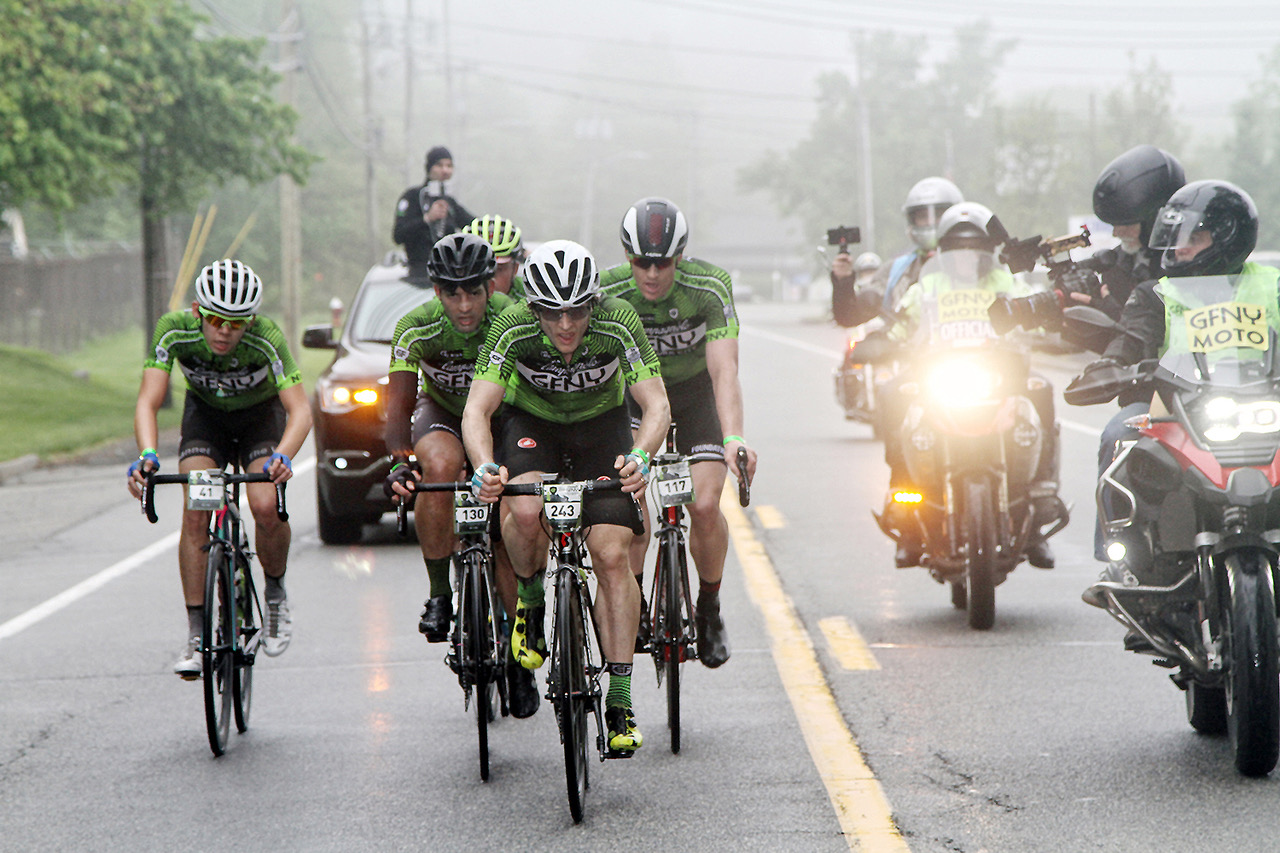
Summary
The past few months have seen hypothesis after hypothesis about what ails the sport of cycling (both professional and non-professional) and the model changes the sport needs to implement so that it will grow and flourish. These hypotheses suggest that cycling should change to become more like other sports, like NFL, NASCAR, NBA. But is cycling like those other sports?
At GFNY, we believe that while we can draw on successes of other sports as our inspiration, we must recognize that cycling, as an endurance sport, cannot fit itself into a fast-action sport box.
Before we look for answers, we need to make sure that we are asking the right questions. While many have postulated, that, like an organism, the sport must grow – or it will die – many of these postulates fail to recognize that not all organisms are alike. How many examples have we seen in business, in entertainment, and in sport of an entity over-extending itself, abandoning core values, and suffering the consequences of trying to grow unsustainably, or becoming something that is at odds with the roots of initial success. Yet, this is precisely what some are calling for in cycling. They argue that cycling’s biggest threat is that by not evolving or expanding, it will not connect with new fans. (OLIVER DUGGAN, 2019)
But is it right to assume that what has worked for the NFL, NASCAR, NBA will work for cycling? Is it right to assume that the business models of these largely Anglo-American spectator sports would even fit cycling, never mind grow cycling? It might well be a gigantic leap in the wrong direction.
Let’s explore an alternative point of view that focuses on what the sport can do to strengthen and sustain itself, and endure for another century while grounded on its 100-year-old tradition, living within its means, being (unashamedly) itself, and being proudly unique.
Our proposal for cycling is that it need not grow to survive, but rather focus on sustaining its core, leverage new technology to reach its fan base, and emphasize the aspects of the sport that make it unique.
Let’s agree for the record, that the biggest threat that road cycling currently faces is lack of credibility: the enduring element of cheating that goes on within the professional and amateur ranks, be it doping or motors or cover-ups or furtive threats. For the purposes of this discussion let’s table this topic so that we can focus on the direction of the sport and its sheer survival.
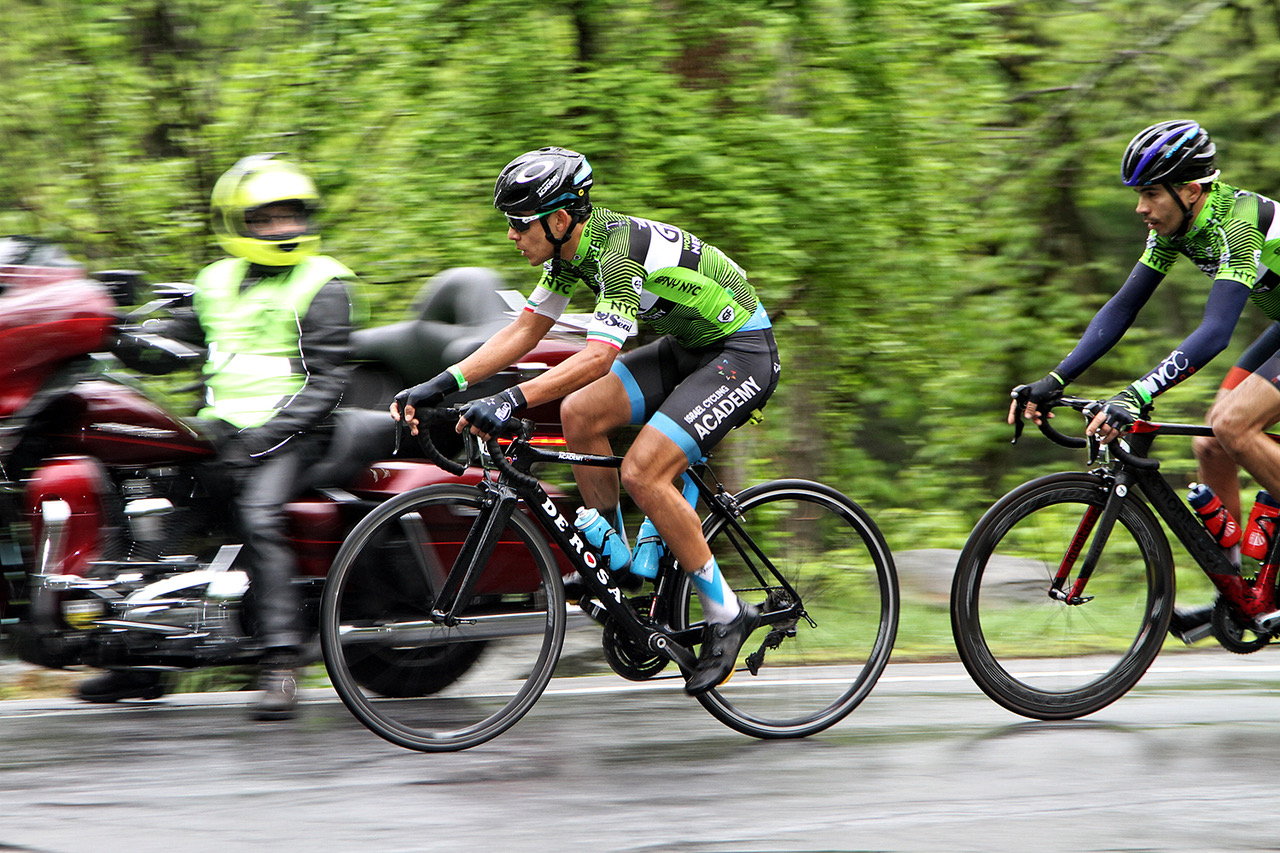
Doubling Down on What We Have
The hypotheses others have begun to unpack all have one major theme in common: cycling requires a broader, or more “mass appeal” to survive, and that to create this mass appeal means focusing the sport on the attention span of mass appeal viewership. While it may strengthen cycling to have a somewhat broader appeal, to dilute the sport to more mass appeal formats assumes that the success of the Anglo-American entertainment models would be replicable everywhere. But mass appeal entertainment and compelling entertainment are not the same thing.
Mass appeal entertainment can be defined easily by the hard-fast-violent action of an American football tackle, over in a split-second and then on to the next play. The viewer is then escorted through an analyst view of exactly what happened, and then quickly moved on to the next play before they can change the channel. The compelling story – who knows – maybe narrated by the analyst who may or may not credit that this was the play that changed the momentum of the game or may be more impressed with the long pass completion on the next play. Meanwhile, eleven players have run off the field for a water break and eleven new players have run on to take the next snap. It fits television perfectly. In fact, it was bred for television.
Cycling was not.
Completely opposite of that, television has had to get creative with how to fit cycling into its airtime. But forcing to change cycling to fit the TV format is the wrong path for cycling. As other sports continue to seek more and more adulation and revenue from television, cycling has a rare opportunity to innovate for the sake of keeping the sport close to its roots and, as the headline would indicate, double down on what we have. Why change cycling to fit the dying media format television? Instead, cycling should explore the technology that is appropriate to everything that is compelling about cycling – the drama, the suffering, the hardship. To test this, watch a stage of the Giro, or Tour for an hour by yourself without picking up your phone. Can you do it? The answer is no. Hence, let’s spend some time exploring this and turn it into an opportunity for our sport.
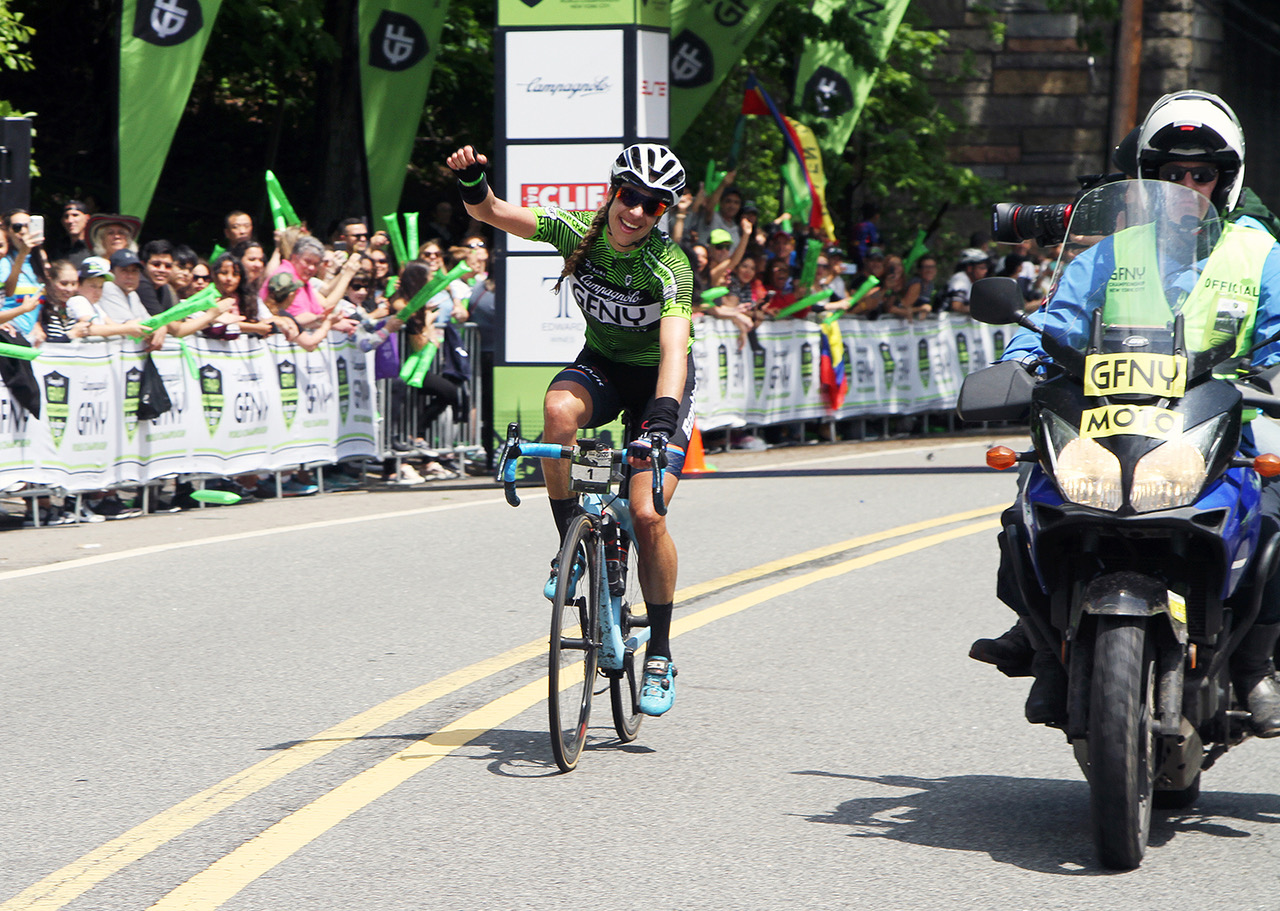
The Opportunities for Disruption
Cycling is the slow food of sports. Think about it. Instead of cutting down for television, imagine creating more compelling, long form stories from inside the peloton. Made possible by longer stages, back to the level of the 1960’s and 1970’s, the dramas would write themselves. Cycling is unique in sports in that there are so many races within a single race. So many stories within what mass appeal entertainment can only capture as a single story. Cycling isn’t about a ball and how it’s handled by 22 people. Cycling is about individuals, their hardship, their determination, their mental and physical power. To strengthen and sustain cycling, we must tell those stories in the context of the race, the course, the conditions.
Television has done what it could to tell some of these stories, but the by-product has unfortunately been distractions. The team support, power meters and race radios have all created technology and chess game stories that are well outside the core of cycling. They have reduced the compelling drama of suffering and hardship and made the narrative about the best uses of technology and the ability to order a new bike midway through a stage. These are not racers creating stories through competition of the strongest legs and biggest hearts, and these are not what made the compelling stories that have given cycling its rich history. Take them out. Let the racers make the race. Let them find their way, make their moves, take their chances, and create the stories that will be legend in the sport. This is what cycling fans and aspiring fans will talk about. Grinta! The true grit that it takes to compete, to suffer over the mountain passes, the cobbles, the strade bianche, the mistral winds and through the kite marking the final kilometer.
While in the 60’s and 70’s, we would have needed to be on the side of the road to catch a glimpse of the suffering, technology is evolving in our favor. Cycling is perfect for the Internet.
Instead of being outside the peloton looking in, new technology can allow us to be inside the peloton. We have already seen that fans are willing to follow GPS dots on a map for days and nights during the unsupported European Transcontinental race. Imagine if we could bring them inside the World Tour peloton through that same browser or mobile screen.
With each rider potentially carrying multiple 5G enabled cameras (ideally front and back, and on the front of the helmet), the viewer can choose between cameras via browser or app-based switchers, thus gaining control of their screen and view of the race. Start the chats – let the audience engage. Turn the narrative around. Instead of transmit-only, have the commentary be interactive, for example by fielding questions from viewers.
The pleasant by-product of this will be lowering the barrier to sponsorship and advertising dollars that can help sustain the sport. Instead of a single set of large-scale sponsors paying out the nose for television airtime, paid placements that don’t disrupt coverage, and provide direct attribution for click-through and conversion will provide return on investment for advertisers that will flock to this model in the same way they ran from television to digital channels such as in-app, paid social, and digital display in the past decade.
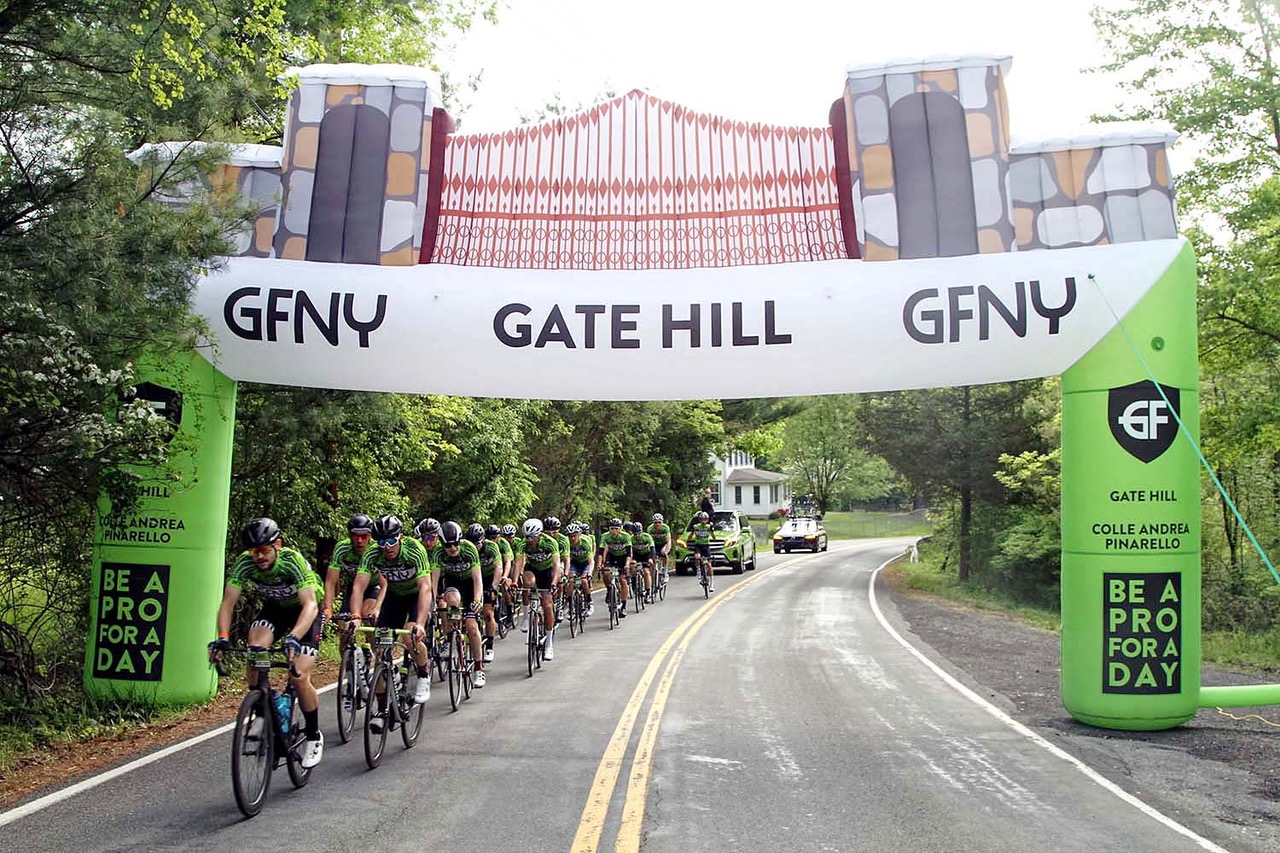
Distinct advantage
A powerful tool for growing our sport is that cycling is open to everyone. You can get on your bike and ride right now, just like your favorite pro. No special NASCAR machine required, no teammates needed, no expensive field to maintain. This accessibility gives endurance sports a unique leg up to engage the audience and make pros more relatable, than for example spectators being able to relate to an NFL player.
Now, take this to the next level, and open the race to everyone. In cycling, we should take inspiration from the success of running and triathlon, sports that have pros and amateurs taking on the same course, the same elements at the same time. An even greater relatability, familiarity and engagement with the audience. GFNY has been a bike race that is open to amateurs and pros alike, since 2014 when we accepted that the line between a professional cyclist (who may have to work part time to make ends meet) and an amateur (who can afford to do nothing else but train full time, and live, eat, sleep like a pro) is gray, and ultimately not a decision that we feel is fair to make. Since then, many Continental and World Tour pros have taken on GFNY races.
Let this accessibility of racing the same race as the pros be another source of growth of our sport.

Governance
The dominance of the sport by the UCI and ASO is not necessarily negative in the context of the disruption we are proposing. The UCI as a global federation assures the homogeneity of rules which is essential to serious racing. Meanwhile ASO assures that some of the most important races with long, storied heritages have a present, and a future, in spite of their current state as loss leaders.
Ideally the UCI would somewhat step back from influencing racing and pull their beak back from the cash-trough, leaving more of the proceeds of this disruptive model, to sustaining and strengthening the sport. Meanwhile, ASO’s antiquated production methodology creates the time and space for disruptors. Outside of the classics and historic road races, the disruptors could build true mass start racing. Everyone racing together, with pros starting at the front of a peloton of up to 10,000 riders. We have seen this model succeed in marathon and triathlon for over four decades. While classic road cycling may not be as easy a fit for this model, our GFNY and other races have shown that (World Tour) pros can race in mass participation events. This appeals to sponsors because the fans are part of the race and have a much stronger connection to the riders.

Summary
There is no question that cycling needs to evolve with the times. Meanwhile, there is no need to dilute it to fit mass appeal, especially because it will likely never have mass appeal. There is no shame in this. It’s not for everyone. Instead, allow it to grow based on its own merits. Be real with what cycling is, and what it isn’t, and don’t try to force the format of an unrelated sport onto cycling to steer cycling away from its core. Cycling can be – thoughtfully, carefully, organically – strengthened by those who crave a compelling story, the drama, the suffering, the hardship. That which drew us all to the sport, is what should be at the core of cycling’s foundation for years to come.
Our To-Do List:
- Make races and stages longer, not shorter – favor compelling stories over diluted entertainment
- Eliminate the distractions – radios, team car support, power meters – favor skill and real strategy over programming a robotic result
- Leverage evolving technologies to bring fans closer to the sport – leapfrog the legacy of television and move ahead without looking back
- Allow room for disruptor races, mass starts, connecting the fans to the pros – shun repercussions for the pros that choose to race in these disruptive new venues
- Use the roots and core as guiding principles – avoid racing “fads” and allow road cycling to be itself and stand on its own merits
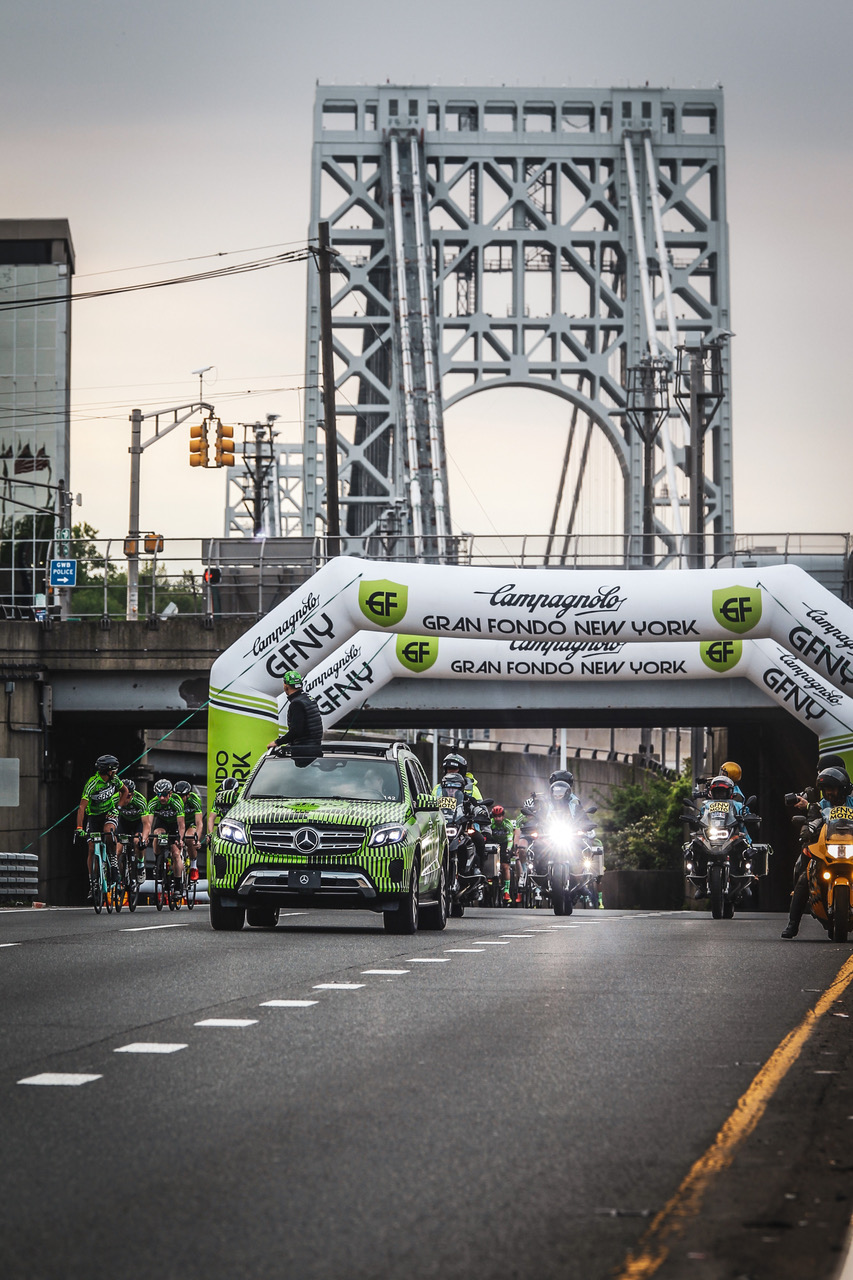
Uli Fluhme started following pro cycling in 1983, at 8 years old, when he watched his first Tour with his dad. He started racing himself when he was 16 and has not stopped. His boundless passion for cycling and racing has been a constant through his entire life and led him, together with his wife, Lidia, to create GFNY, the world largest cycling marathon series. He has experienced bike racing as an athlete as well as a race organizer in over 30 countries, for 30 years.
Is this the hardest GFNY climb? // GFNY GRUPPO News 004
Written by GFNY on .
In today’s show:
Welcome to GFNY GRUPPO, a channel made to bring to you all the news about the GFNY world.
- New GFNY Sunglasses.
- Confirmed date for GFNY Uruguay Colonia.
- Which one is the hardest climb on the GFNY calendar?
- To win GFNY sunglasses, tell us which one is you think is the hardest GFNY climb.
Bienvenidos a GFNY GRUPPO, un canal para mostrarles todo el mundo de GFNY.
- Nuevas gafas de GFNY.
- Fecha confirmada para GFNY Uruguay Colonia.
- ¿Cuál es la escalada más difícil en el calendario GFNY?
- Para ganar gafas de sol GFNY, dinos cuál crees que es la escalada más difícil de GFNY.
Partners - Global

QUICK LINKS
Copyright © 2025 Gran Fondo New York Inc.



